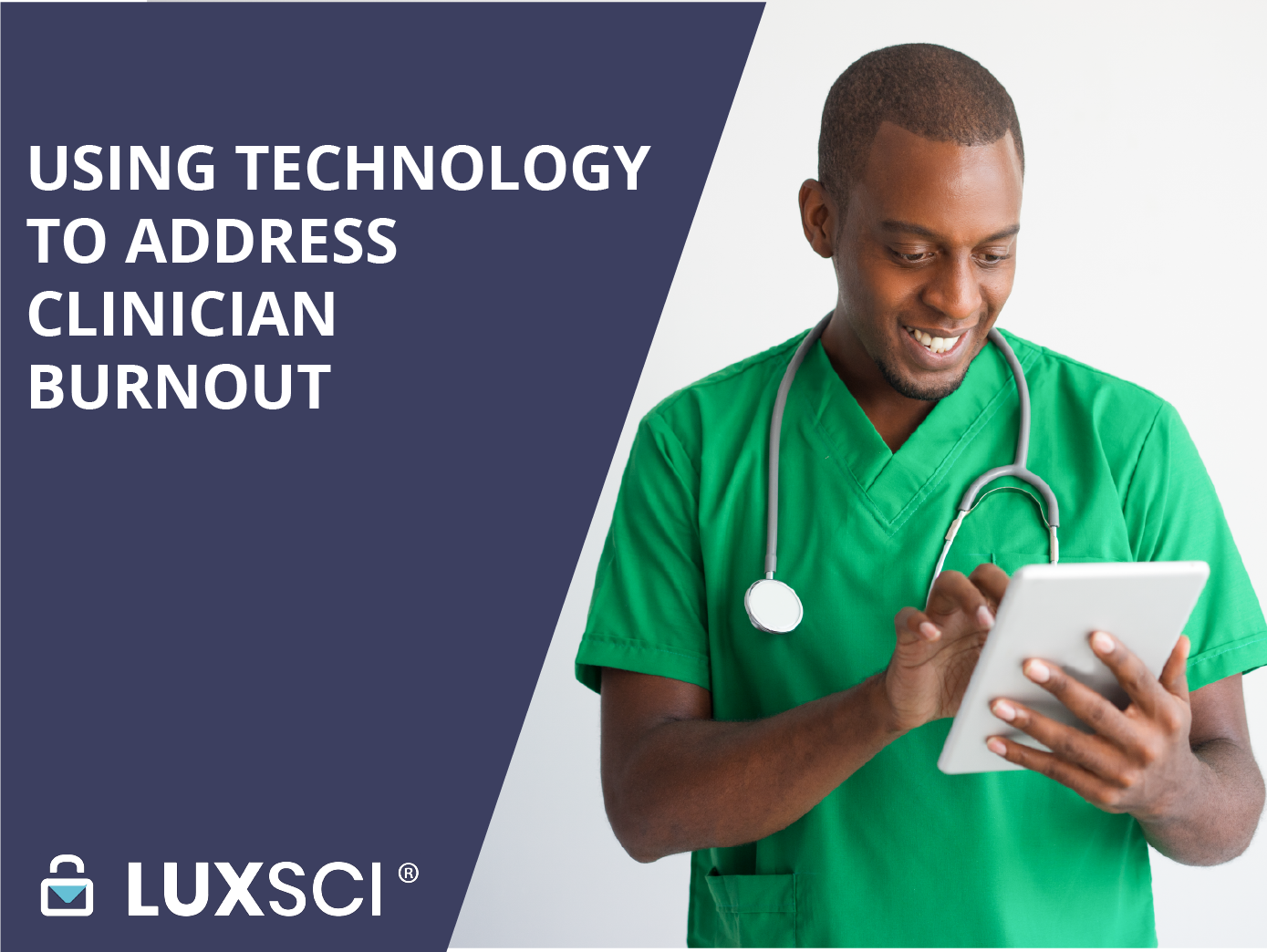Even before the COVID-19 pandemic, challenges with clinician burnout were impacting the healthcare system. A 2019 British Medical Association (BMA) survey found 80% of doctors were at high or very high risk of burnout.
Enter the pandemic: staffing shortages, supply chain issues, and new regulations all contributed to an increase in clinician burnout over the last two years. This is a major issue- burned out clinicians make more mistakes and have less satisfied patients. In this article, we discuss ways to use technology to address burnout and improve workflows.
Causes of Clinician Burnout
The COVID-19 pandemic illuminated just how fragile the healthcare workforce is. As COVID-19 swept across the country, front-line workers were under immense pressure to serve their patients in extremely stressful circumstances. In the early days of the pandemic, the lack of personal protective equipment required clinicians to put their lives on the line to care for patients. In addition, quarantines for COVID-19 exposure and family caretaking responsibilities drastically impacted staffing and patient-to-nurse levels. Healthcare workers often had no choice but to take on more shifts during highly stressful time periods to help patients get the care they deserve.
Even though the pandemic is winding down, clinicians are still experiencing the effects of burnout. Healthcare workers are leaving their jobs at high rates and in some cases leaving the field altogether. Workforce shortages, increasing stress, and clinical documentation requirements leave healthcare professionals increasingly burned out.
Ways to Alleviate Clinician Burnout with Digital Technology
Not only is burnout bad for health care providers, but it can also lead to mistakes and poor patient experiences. New technology can help alleviate burnout, but it is important to find a balance. Introducing new technologies without proper training or administration can increase stress and make things worse. EHRs are an example of a type of technology that is often a major cause of burnout. It is important to be thoughtful with any technology implementation.
Below, we discuss some ways to use technology to streamline and accelerate clinician workflows.
Reduce Administrative Burdens
New technology can help streamline administrative workflows. Let’s use an annual doctor’s appointment as an example. Upon arrival to an appointment, a patient fills out a paper form with their health conditions, medications, family history, and other information. It is collected by the front desk and the patient heads into the appointment, where they are often asked the same series of questions by the clinician, who hastily types the answers into the patient’s health record.
There is a better way to collect this information. By digitizing the patient intake form, the patient’s answers are automatically added to their health record, reducing administrative time. The clinician can spend more time providing health care, rather than filling out paperwork. Updating patient health records is one of the most time-consuming tasks that leads to burnout. By digitizing some of this paperwork, it reduces the administrative burden on clinicians.
Patient Education
Patient education is extremely important in a world of medical misinformation. However, it can also be a time-consuming process for front-line staff. Digitizing patient resources in the form of articles, videos, and PDFs is a convenient way to answer frequently asked questions.
Let’s use an example of a patient with a broken arm. They get a cast at the office and the doctor explains how to take care of it. However, when they get home and go to sleep, they wake up with an extremely itchy arm. They might be concerned and reach out to their healthcare provider. Instead interrupting the clinician’s day with a phone call, the administrative staff can email pre-produced videos or articles explaining how to treat the itching and what they should do if it becomes more severe.
By creating these materials in advance, it is easy for clinicians to rapidly answer questions. In addition, patients can have their issues addressed quickly and will have a better experience. They also may be less likely to turn to social media to crowdsource at-home remedies.
Patient Communication
On that note, anyone who has tried to get in touch with their doctor by making a phone call knows how time-consuming and tedious it can be. Instead, encourage asynchronous messaging for non-urgent medical issues. Asynchronous messaging, like secure email and texting, is not immediate and clinicians can respond to whenever is convenient. It is useful when requesting referrals and prescription refills.
Using a patient portal allows both doctors and administrators from the office to address the patient’s needs and distribute workflows in a way that makes sense. Although a patient may seek out a doctor, their issues may be more properly handled by a nurse or administrative staff.
Conclusion
Clinician burnout is a major issue impacting health systems and patient health outcomes. Tackling this challenge is a difficult task, but organizations should look into ways to use technology to improve and automate workflows.

